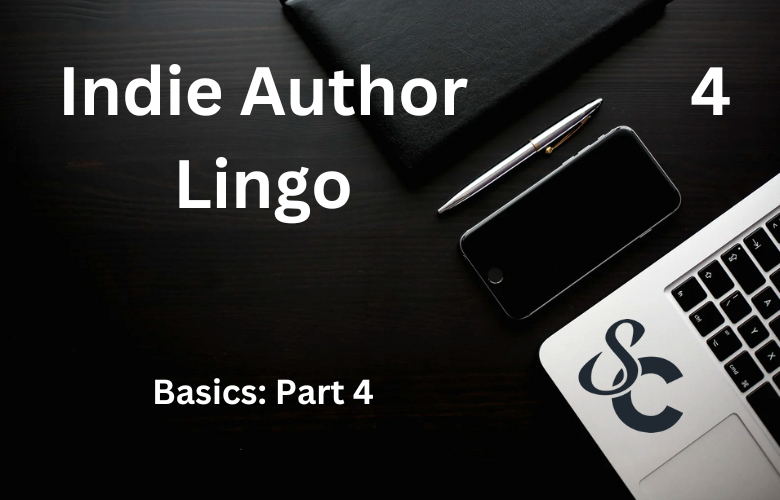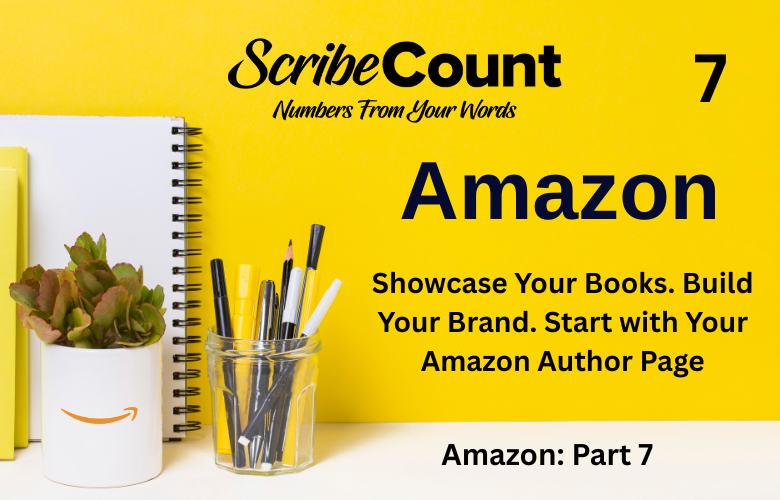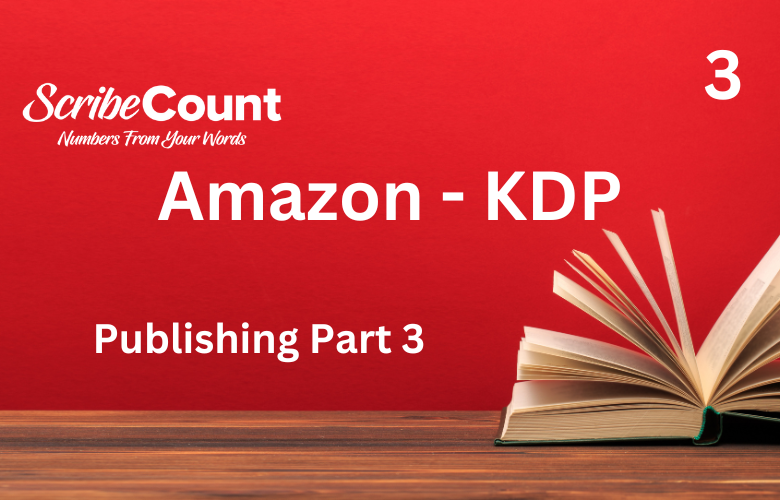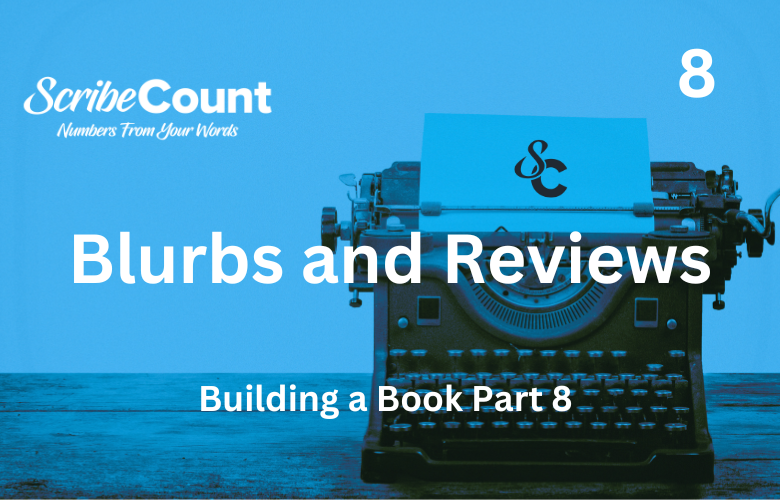Do you speak Indie?
“Hey, Randall! How’s the new book coming along?”
“Pretty good, I started it out in media res, but then the MS got bogged down right after the McGuffin, so I cycled it through Freytags and ended up changing it to a standard three-act with a long prologue. I had to rework all the plot points and hit a few more tropes, but it's back in my lane now. Funny thing is I thought it was going to be HR, but turns out the arc works better as PR with an HEA. Anyway, the rewrite pushed my deadline out past NaNo, which kind of sucks as I really wanted to make that this year. You know?”
“Uh…yeah.”
“Anyway, I still have the backmatter to write and then I have to buy some more ISBN’s, kern my title, work on the blurb, and then calculate all my spines. I’ll do a final once the betas send it back and hopefully get it up for preorder on the Zon by December. I’ll let you know.”
“Okay…great?”
If you understood all that you’re well on your way to speaking fluent indie. For the rest of us, there’s help.
Like most professional occupations, writing and publishing have their own special lingo. An experienced author/publisher can quickly lose a newbie with a torrent of acronyms, insider terms, technical jargon, contractions, and colloquial speech.
When blogging, posting on various social media pages, or appearing on a podcast, veteran authors should make every effort to keep their words free of jargon and speak to their audience in a language that any aspiring author will easily understand.
There are times, however, when this is unavoidable. So let's visit a few of the terms, acronyms, and other jargon that you’ll most often hear in the world of Indie Publishing.
Some key terms and acronyms to know:
KDP:
KDP stands for Kindle Direct Publishing. This is the service Amazon started back in 2008 that allows any author to create and publish books to the Amazon store. The service is free to use with Amazon taking around 30% of each sale. Amazon offers authors the option of publishing Ebooks, paperbacks in both standard and large print, and limited hardcovers. Authors can reach a worldwide audience of readers through Amazon's Expanded Distribution option. Authors retain full rights to their books and control the price, coverart, and content (within guidelines) of their books. Authors can place or pull their books from the Amazon store at will. Amazon offers a variety of tools to help authors construct their books and market them within the Amazon store. Most self-publishing authors start out at Amazon and then venture outside it to other sales platforms once they have gained some traction and familiarity with how the sales platforms work.
KU/Exclusivity:
KU is short for Kindle Unlimited, a monthly subscription service Amazon started in 2014 that gives its members access to digital books, audiobooks, comics, and various magazines that authors have enrolled in the program. Readers join for an $11.99/month fee and can then borrow up to 20 titles at a time with no deadline on their return. Indie authors may enroll their books in the Kindle Unlimited library for a renewable 3-month period. Authors are paid by the page-read, which is determined by Amazon. The average payout has been .0045 cents per page for the last several years. Authors who enroll their books in KU count on high-volume readers to achieve a return. KU requires exclusivity, meaning that authors who have their books enrolled in KU cannot have those same books up for sale on ANY other platform. There are many advantages and disadvantages to having your library in KU. Authors will need to decide whether or not their books are the right fit for such a program.
IP:
IP stands for Intellectual Property and the reason this is near the top of the list is it’s the most important thing that self-publishers need to understand before putting their books up for sale.
Intellectual Property:
a work or invention that is the result of creativity, such as a manuscript or a design, to which one has rights and for which one may apply for a patent, copyright, trademark, etc.
What that means is that when you load a book into the Amazon system you are not “selling books”. What you are doing is licensing your intellectual property to them to distribute for a fee. The money you earn is both a royalty and proceeds from a sale.
Proceeds: The total amount of money earned from a sale, before any costs or expenses are subtracted. Proceeds can be calculated by multiplying the price of goods sold by the number of units sold.
Royalties: Payments made to the owner of an asset, such as intellectual property, for the right to use it. Royalties are typically calculated as a percentage of revenue or sales generated from using that asset.
This makes copyrighting your work very important. See our guide on Copyright in the Security section to learn how to prove it.
WIDE:
The term WIDE (often capitalized) refers to authors who make their books available on every sales platform there is. You will often see authors or books identified as either “KU/Exclusive to Amazon” or “WIDE”. There are advantages to both, which we discuss in other posts.
FORMAT:
Format refers to the form the book is being sold in be it eBook(EB), Paperback (PB), Large Print Paperback (LPPB), Hardcover (HC), or Audio. Within those categories, there are several options as to size and construction. Each format will require a specific identification number known as an ISBN, or International Standard Book Number, which is a unique 10 or 13-digit number that identifies books and other book-like publications. Each format will require a separate file to be generated for upload into the sales platform you are selling your books through. Most professional formatters offer their services as packages and will provide you your book in the files you wish to publish them in. More about formatting and ISBNs in other posts.
TOS:
TOS stands for Terms of Service. Each platform has them and they specify the rules the company has in place regarding you publishing your books with them. Most authors skip this lengthy read of legalese and that often comes back to haunt them. To prevent the loss of your account it's important to know the rules and abide by them. Amazon’s TOS is lengthy but readable and it's highly suggested that you read it at least once before publishing. Other platforms have similar terms, but with Amazon being the largest platform and the usual starting place for most authors their TOS is considered the best example. Paying attention to any updates the platforms announce is also critical to keeping your accounts in good standing.
WIP:
WIP stands for Work In Progress. This refers to any creative content that an author is currently working on. “My WIP is at about 60%”.
FFIS:
Free First In Series. Might also be referred to as First in Series, Free. This is a marketing tactic known as a loss-leader, where authors with three or more books written in a series will discount the first book to free in order to attract first-time readers to their work. There are several marketing services that help authors promote their FFIS books and it has proven to be an effective tactic for new authors looking to build their readership.
METADATA:
This is simply data about data. It’s content that describes and gives information about other things related to what the person is seeing. In the indie author world, it is commonly used when referring to the content found in the back of the book, or in the footnotes of a website.
BACKMATTER:
Metadata that is found in the back of a book is known as backmatter. This is often a link to the next book in the series or other books by that author, the author's picture and bio, links to their website, store, newsletter, or social media accounts, or anything else the author wishes to include. Backmatter is often referred to as “the most important part of the book” as it’s the best way to turn a casual reader into a regular one.
BETA:
Beta’s are Readers that the author provides with a rough draft of their WIP in return for feedback on the story, characters, readability, and a variety of other factors. Authors will reach out to fans of their work to engage with them and invite them to be beta readers. Beta readers are expected to provide detailed assessments of the books they are reading. In return for this free evaluation, the author will usually provide the finished book for free to their betas. Good beta readers are one of the author’s best assets, often finding problems with the manuscript that the authors failed to see.
AGGREGATORS:
In the Indie Author world Aggregators come in two forms: those that distribute, and those that collect.
Distributors are services that will publish your book to multiple platforms, handle any maintenance or price changes, and then collect the proceeds for you. Authors who wish to publish their work WIDE but lack the time to do so themselves will often use a service such as Draft2Digital or PublishDrive to do so. There are advantages and disadvantages to using an aggregator and we’ll discuss them in a separate post.
The second type of aggregator is a sales report aggregator. This is a service that collects sales reports from multiple platforms and consolidates them into one dashboard. The main advantage is the time saved and the ability to analyze that data more easily with the tools that the service provides. ScribeCount is a sales report aggregator that pulls reports from over 57 different sales platforms.
ALLI:
ALLI is The Alliance of Independent Authors, which is a global membership association for self-publishing authors. Their mission is ethics and excellence in self-publishing. Alli members enjoy access to their private forums where they will find contract advice, discounts, guidebooks, literary agents, advice, advocacy, and more. Alli also keeps a Self-Publishing Services Directory, which vets the many services out there and provides advice on which are trustworthy. The discounts Alli provides to its members often exceed the cost of membership and the advice provided is respected. (ScribeCount is a "Trusted Vendor" with Alli)
AUTHOR CENTRAL:
Amazon Author Central is a free dashboard that Amazon provides to help published authors manage their presence on Amazon. Authors can share information about themselves and their books, including biographies in multiple languages, photos and videos, editorial reviews, sales rankings, and customer reviews. They can also use it to promote their work by highlighting their books, engaging with readers, and gaining marketplace insights. It’s recommended that authors set up their Author Central dashboard soon after publishing their first book.
BACKLIST:
An author's backlist consists of books they have already published. You might hear about authors “leveraging their backlist” or “promoting their backlist”, this simply refers to them marketing their existing work in relation to their newer books. It's often said that the best marketing an author can do is to write the next book. The larger your backlist the more this proves true. When a reader discovers an author they like one of the first things they do is look for other books they have written. A healthy backlist can be quite profitable.
BLURB:
Blurbs are short descriptions of a book written for promotional purposes. They appear on the cover of a book, on the book sales page, or in an advertisement. Often viewed by authors as being one of the hardest things to write, blurbs are one of the most important pieces of content you can create to sell your book. A good blurb catches the reader's attention, piques their curiosity, and compels them to buy.
DIRECT SALES:
Direct Sales are sales made by the authors themselves and not through a sales platform or aggregator such as Amazon or Draft2Digital. For indie authors, this usually refers to sales made through the author's website and online store. The two most popular providers are Shopify and WooCommerce. Authors selling directly have many advantages over those selling through the sales platforms, the main one being that they receive 100% of the revenue and collect that money immediately while maintaining total control of every aspect of the transaction. This direct relationship provides a way to connect with their readers on a more personal level and then leverage that connection resulting in a dedicated fan base. With the advent of various delivery services (BookFunnel and StoryOrigin) and payment processing tools (PayPal and Stripe) making the transaction much smoother authors selling directly are seeing a large increase in their sales through their own websites, many of them exceeding those made through the biggest platforms. We talk more about Direct Sales in another post.
KEYWORDS:
When you upload a book to a sales platform you’ll be asked to provide some keywords relating to it. Keywords are simply informative words used in an information retrieval system to indicate the content of a document. Think of it as that guy welcoming you to the bookstore.
“Cookbooks?”
“Aisle ten.”
Keywords can be one word or a short phrase, whatever works to direct the reader where they wish to go. Leveraging keywords is a skill that demands some research first and once you have them they require regular updating. You’ll often hear authors refer to “tweaking my keywords”. This means they need to identify what keywords are working and which ones are not and then adjust appropriately to get their books in front of more readers Fortunately, there are a few services that have emerged to help the indie author with this task.
Where to learn more.
We’ve only touched on a few of the many terms indie authors use every day here. To see a more complete list ScribeCount has published the book “Author Lingo”. It contains over 250 pages of terms, acronyms, and abbreviations in one easy-to-use list. Free to all in eBook format.




